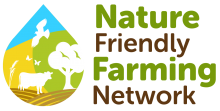Above and below the surface, species-rich grasslands support diverse life, including plants, fungi, flora, bacteria, birds and mammals, pollinators, and other threatened invertebrates.
What are species-rich grasslands?
Species-rich grasslands support a wide range of wildflowers, from the bright purples of knapweed, the cool blues of harebells or the vibrant yellows of birdsfoot trefoils. They provide a kaleidoscope of colours, healthy forage for livestock and a vital food source for our threatened pollinators.
Yet these unique grasslands are increasingly threatened by changes in land use and intensive agriculture practices, having declined by 97% in recent decades and accounting for less than 1% of UK land cover. In Scotland, around 40% of species-rich grasslands were lost between 1983-2005

Farming practices are critical in maintaining grassland richness through careful grazing management or cutting regimes. Appropriate management means allowing the sward to flower and flowering species to set seed and germinate at the right times of the year.
Protecting and restoring these pastures is crucial for carbon storage, biodiversity recovery and landscape resilience. Livestock play a time-honoured role in preserving grasslands, but only when managed to ensure their survival, as too much or too little grazing can quickly diminish their value. The type of livestock is critical in securing the health and vitality of these threatened farm ecosystems, with slow-maturing native breed animals particularly equipped to do this job.
Management is a win-win for farms, returning numerous benefits, including:
-
Enhanced pollinator populations for vital pollination and pest regulation
-
Forage provides better herd health when rotationally grazed
-
Increased biodiversity
-
Better soil function, water infiltration and nutrient cycling
-
More carbon sequestered in the soil
Currently, there is no recognition of grassland restoration targets in the drive to reduce greenhouse gas emissions. When well managed, they act as crucial carbon stores that must be protected, yet their value is often overlooked. We would like to see governments incentivise holistic systems of grassland management that improve carbon sequestration, water quality and biodiversity above and below the soil line.
As graziers, grazing management is a key part of our job, allowing us to feed our cattle as cheaply and healthily as possible and using the process of grazing as an ecological engineering tool for nature restoration and habitat creation.
Approaches like Holistic Management, Adaptive Multi Paddock Grazing or Mob Grazing are all based on the premise of rest to enable recovery and mimic the movement of large herbivores across open grassland.
Such management techniques don’t consider the number of animals in a field to be a limiting factor for grass productivity, but instead, recognise that time is the key determinator of successful sward restoration. This involves implementing fairly high-density, short-duration grazing followed by a long rest period. Using small paddocks for short periods of time (1-3 days) and then moving animals on to the next paddock, rest and recovery in all ungrazed areas are enabled, with animals not returning for 60, 80 or even over 100 days depending on the time of year. In concentrating the grazing effort on small paddocks with as few groups as possible, the rest of the farm is given the time it needs to re-grow grass, herbs and wildflowers and leave space for wildlife.
Planning grazing in this way not only contributes to soil health, water infiltration and increased plant cover, but it also helps the farmer to understand their grass budget for the year, thereby reducing stress and helping develop early contingency plans creating an adaptive and more resilient farm environment.
Nikki Yoxall
Many farmers grazing in these ways report an extended grazing season, which reduces winter housing costs, or the capacity to outwinter all stock using silage, hay or standing hay, also known as deferred or stockpiled grass or even ‘foggage’.
Using electric fencing, or in some cases, e-collars, to control the movement of animals is critical in managing the grazing pressure. This is also known as ‘animal impact’ and takes into account not only what is eaten by the animals but also the effect of their hooves on the ground, trampling of plants and dung distribution. The amount of grass left over when animals leave a grazing area, the ‘residual’ can vary at different times of the year and under different management approaches.
On our farm, we graze tall grass and leave a fairly tall residual most of the year to act as a habitat for sward-dwelling insects and ground-nesting birds.
Tall Grass Grazing is great for wildlife, creates lots of underground root structure which is important for soil health, keeps grazing mouths out of the parasite zone and allows flowering plants to express themselves throughout the year – it can also mean a free re-seed when plants with a seed head are trampled into the ground. Animals will be eating a varied and mixed diet, the leafy green part of the plant, the seed head and some parts that are starting to dry out, but this helps keep their rumen functioning optimally throughout the year.
There are opportunities to be adaptive in these systems, and this can be driven by water access or the need to give animals the choice to find shade or shelter at different times of the year. Paddock sizes can change to ensure animal welfare isn’t compromised, removal of the ‘back fence’ to allow animals to move back to shelter in bad weather, or the integration of this approach into a silvopasture system where animals are mobbed under trees is all possible. Moving more frequently in wet weather reduces the risk of poaching and slowing down in very dry weather when grass growth reduces helps to maintain the feed budget ahead.
Nikki Yoxall
The main limitation cited by those new to mob grazing is managing water. Mobile troughs, solar water pumps and strategic placement of water tanks can all help to address this problem. There are creative and flexible, bought and homemade options available, with the existing mob grazing community a great place to seek out help and advice.
Photos: Nikki Yoxall
Nikki Yoxall
Livestock farmer in Aberdeenshire and Head of Research at Pasture for Life



